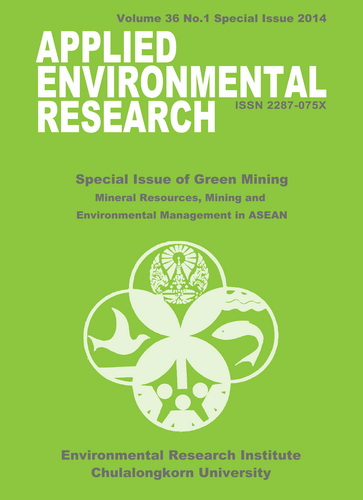Mineral Resources Potential of Vietnam and Current State of Mining Activity
Main Article Content
Abstract
Vietnam, with an area of 331,210 km2, occupies the eastern side of the Indochina peninsula. It forms a narrow (locally only 40-70 km) band of land, extending over 1,500 km along the East Sea (South China Sea). Vietnam is constituted mainly by the folded belts surrounding two shields, cratonised in the Upper Proterozoic: the Yangtze craton and the Indochina shield, located in the Mekong basin and occupying most of Cambodia and the contiguous parts of Laos and Vietnam. The folding occurred during the late Hercynian (early Triassic) orogenic movements, active mainly in the central and southern Vietnam and the Indosinian (late Triassic, ante Norian) orogeny. Various geological surveys have indicated that Vietnam is well endowed with a wide range of mineral resources. The country has some of the world's biggest resources of phosphate (apatite), bauxites, rare earths, and large, commercially viable deposits of oil, coal, gold, gemstones, copper, zinc, tin, chromite, manganese, titanium (mineral sands), graphite and other minerals. At present, Vietnam produces approximately 3.5 million tons of crude oil/year and its mineral production includes: coal (about 10.7 million tons a-1), cement (1.6 million tons), phosphate (300,000 tons), chromite (3.5 million tons), iron ores, gold (around 1,000 kg, including production by the local population), cassiterite (3,000 tons), graphite, kaolin and many other minerals produced to serve domestic demand. Several foreign companies are involved in oil exploration (BP, Total, BHP) as well as in prospecting (seldom in exploitation) for minerals (mainly Australian companies). In spite of the current mineral production, the country’s mining sector is still under-developed and many available mineral resources remain unexploited. Nevertheless, this situation is changing. The recent but increasing level of involvement of foreign companies in the Vietnamese mineral sector will accelerate the development of high value and/or export-orientated minerals, especially as some of the neighboring countries (China, Japan, South Korea ...) lack many mineral resources. And the developing Vietnamese economy will surely entail mining of various minerals for the domestic use.
Article Details

This work is licensed under a Creative Commons Attribution-NonCommercial 4.0 International License.
Published articles are under the copyright of the Applied Environmental Research effective when the article is accepted for publication thus granting Applied Environmental Research all rights for the work so that both parties may be protected from the consequences of unauthorized use. Partially or totally publication of an article elsewhere is possible only after the consent from the editors.

